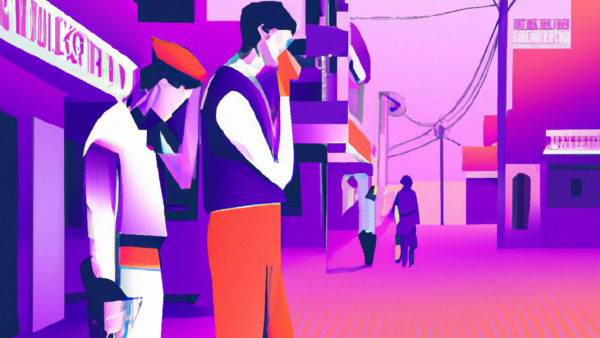Website design and user experience have evolved beyond just ‘designs’. It’s surprising to think that just some 10 years ago, people were dubious about the term ‘app’. Today, that is another household name.
Earlier, Indian companies and institutions hardly cared about the design experience. Their motive was focused more on sharing information online, like a display with no space for interaction.
But times have changed! And so has the scope for UI/UX designs. Now, companies just get why designs need to be translated as smooth experiences. There! It’s about the experience!
Good design is no longer an “option”
The rise in usage of the internet grew massively with the advent of e-commerce industries like Flipkart and Amazon. Then came the increased accessibility to smartphones. App-based companies flourished during this time, with small and big-scale enterprises shifting from the website front to ‘smart tech’.
Social media was not far from this run. It quickly caught up with the race and made small-scale businesses, and start-ups among others prosper. It became a platform that provided needful (brief) insights, accessibility, transparency, and authenticity to companies of all scales.
As smart technology thrived, there was also rising competition among start-ups to provide the best convenience. Customers had to feel that their quality of life is improving by adopting their services. In simpler terms, they had to make customers’ lives easier.
With this, User Experience designs were (finally) taken seriously at the Indian forefront.
Make sure you don’t miss the Big Picture
Companies began aspiring to a strong base online – both through apps and websites. A uniform brand language became necessary for the interface designs to maintain consistency. This ensured a definitive personality for the brands too.
Can you see how the growth of branding and communication parallelly escalated? Companies recognized that powerful branding is possible when their presence is standardized through digital mediums.
Fast forward to the current world of the web and we see the designs are more customer-centric with a focus on the customer experience. Content and design strategies exist not for the sake of it, but to actually serve a purpose. Every app has a wider vision, which gets reflected through simple design experiences.
So, does this mean the success of any app/ website depends on a pleasing user experience? Absolutely!
Customer is still the King. A spoiled one.
For any app or website to take off, their quality of convenience shouldn’t be just ‘good’ but great. Customers should feel that they have acquired some kind of value by taking part in the app experience.
Think of it this way – when you expect your food delivery in under 30 minutes, the ordering process is expected to be extremely fluid and lightning-quick. The swiping and decision-making, all depend on how well the UI design is.
Once the interface design is set, user experience design goes hand-in-hand. Customers need to be validated for their time and money spent on the app and the UX designs do just that.
Swiggy throwing confetti every time you use a coupon code is a great example of UX design. Not to forget, the different icons for your delivery partner on the waiting screen. Or even the ‘zoooom’ sound on the Zomato app as you place your order. All these are simple, minute gestures that acknowledge and value customers’ participation. Played like smooth winners, right there!
What next?
The start-up boom in the country was a wake-up call to all the app development companies and entrepreneurs out there. It showed how UI/UX designs play a key role in carving a niche for themselves.
The success story of the start-ups relied heavily on customer experience and user adoption. This was due to the convenience of interaction. It’s like an addiction and here to stay. Customers will always come back for more in that case.
In a country like India, user personas are varied and multiple. Design strategies can succeed only with intricately mapped human behaviours. Personalisation and immersive experiences are two major rising trends to look forward to this year. Either way, ‘convenience’ will surely be the decision-making factor at every step of the UI/UX design process. That pretty much does the trick!
